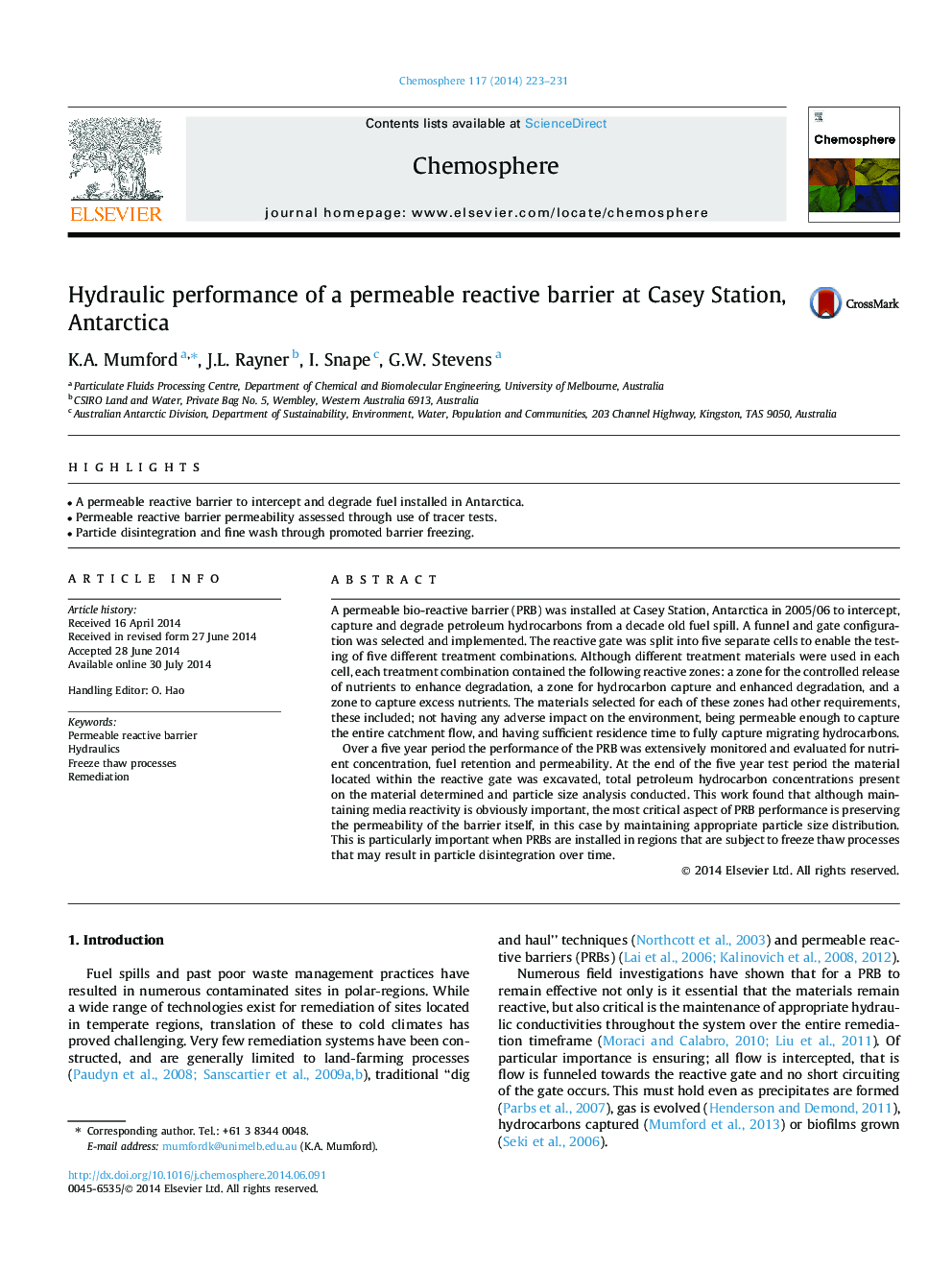| Article ID | Journal | Published Year | Pages | File Type |
|---|---|---|---|---|
| 6308429 | Chemosphere | 2014 | 9 Pages |
â¢A permeable reactive barrier to intercept and degrade fuel installed in Antarctica.â¢Permeable reactive barrier permeability assessed through use of tracer tests.â¢Particle disintegration and fine wash through promoted barrier freezing.
A permeable bio-reactive barrier (PRB) was installed at Casey Station, Antarctica in 2005/06 to intercept, capture and degrade petroleum hydrocarbons from a decade old fuel spill. A funnel and gate configuration was selected and implemented. The reactive gate was split into five separate cells to enable the testing of five different treatment combinations. Although different treatment materials were used in each cell, each treatment combination contained the following reactive zones: a zone for the controlled release of nutrients to enhance degradation, a zone for hydrocarbon capture and enhanced degradation, and a zone to capture excess nutrients. The materials selected for each of these zones had other requirements, these included; not having any adverse impact on the environment, being permeable enough to capture the entire catchment flow, and having sufficient residence time to fully capture migrating hydrocarbons.Over a five year period the performance of the PRB was extensively monitored and evaluated for nutrient concentration, fuel retention and permeability. At the end of the five year test period the material located within the reactive gate was excavated, total petroleum hydrocarbon concentrations present on the material determined and particle size analysis conducted. This work found that although maintaining media reactivity is obviously important, the most critical aspect of PRB performance is preserving the permeability of the barrier itself, in this case by maintaining appropriate particle size distribution. This is particularly important when PRBs are installed in regions that are subject to freeze thaw processes that may result in particle disintegration over time.
